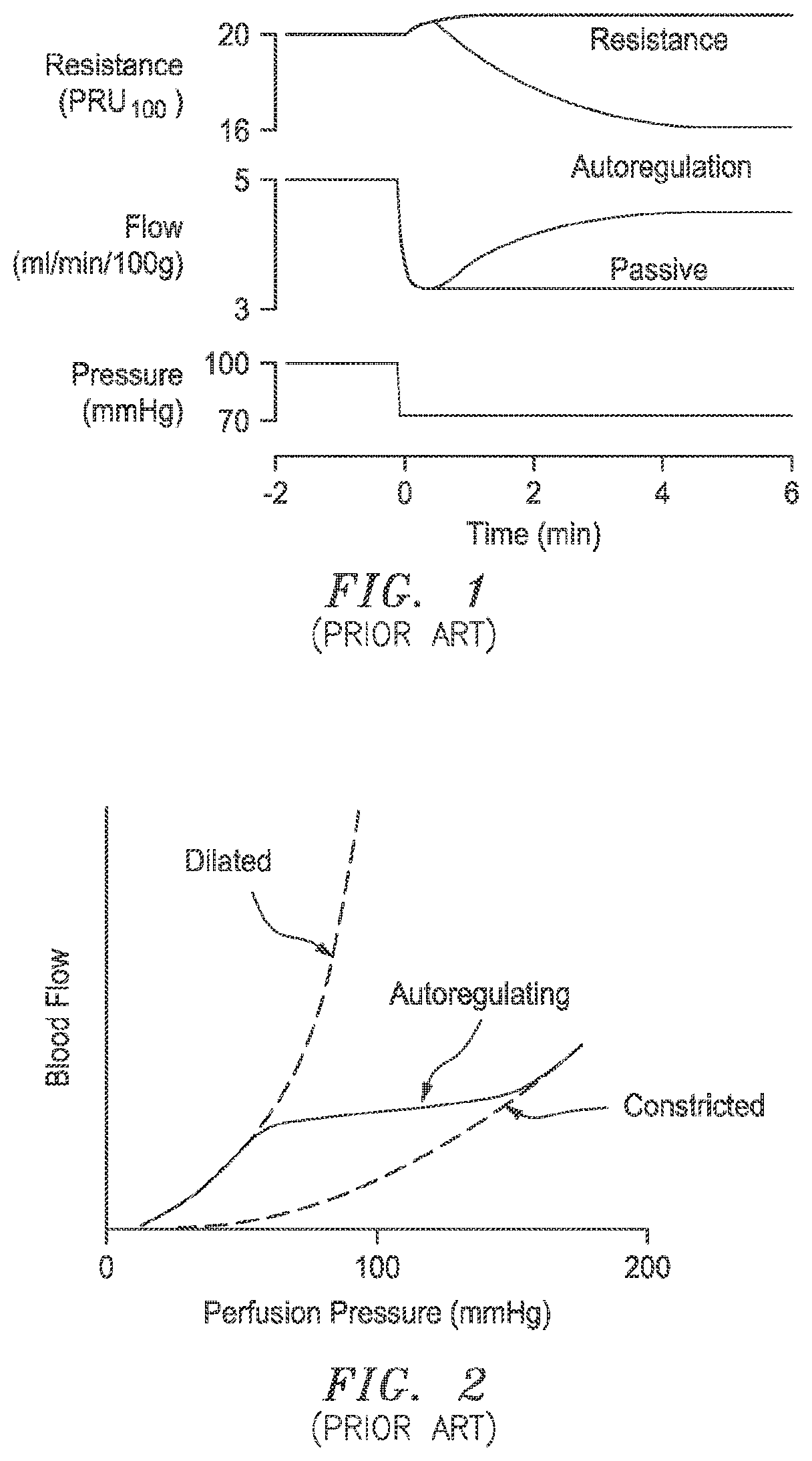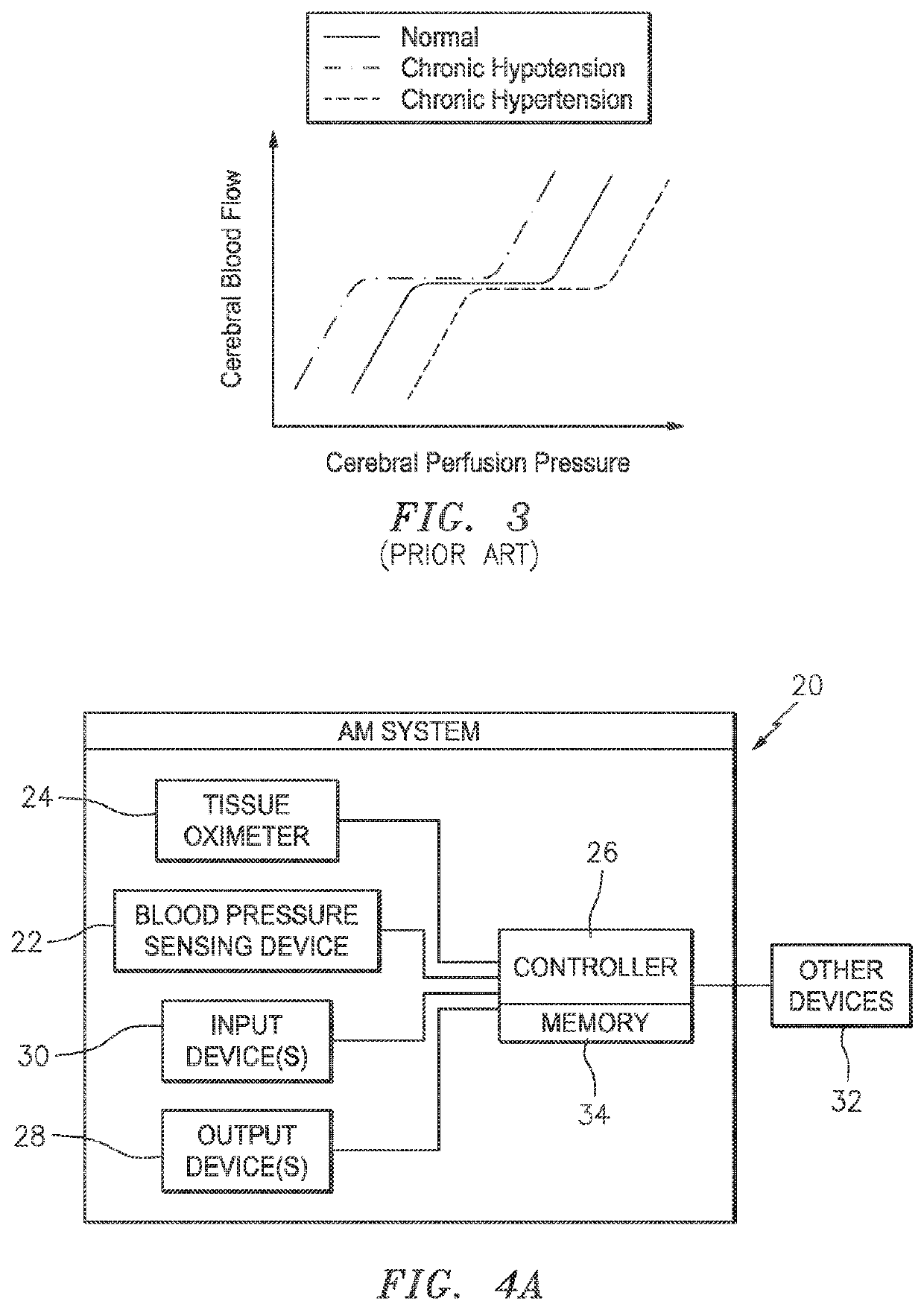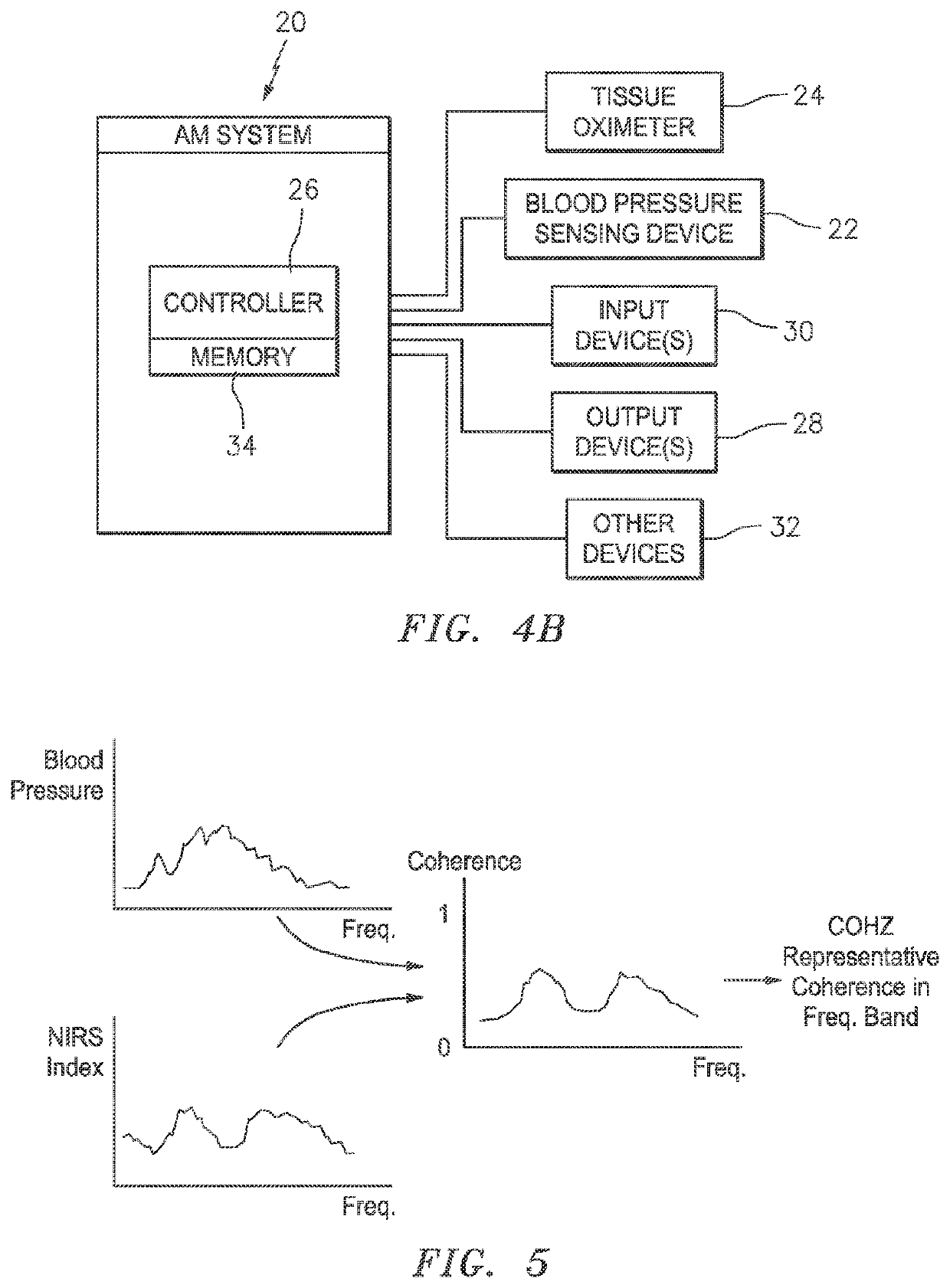Autoregulation system and method using tissue oximetry and blood pressure
a tissue oximetry and autoregulation technology, applied in the field of medical equipment and methods, can solve the problems of rapid and sustained drop in blood flow, limited range of vascular resistance, inadequate perfusion,
- Summary
- Abstract
- Description
- Claims
- Application Information
AI Technical Summary
Benefits of technology
Problems solved by technology
Method used
Image
Examples
Embodiment Construction
[0049]Referring to FIGS. 4A and 4B, a non-limiting embodiment of an autoregulation measurement and monitoring system (“AM system 20”) is shown. As will be described herein, the AM system 20 may be configured to produce a data value (e.g., a coherence value) that can be measured and / or monitored, or a data value that is indicative of the state of a subject's autoregulation system function; e.g., the degree to which the subject's autoregulation system is functioning. While an exemplary AM system 20 is shown, the exemplary components illustrated in FIGS. 4A and 4B are not intended to be limiting; e.g., additional or alternative components and / or implementations may be used. In some embodiments (e.g., FIG. 4A), the AM system 20 may include a blood pressure sensing device 22, a tissue oximeter 24, a controller 26, one or more output devices 28, and one or more input devices 30 integrated into a single system device; e.g., a controller 26 integrally connected with sensing hardware (e.g., ...
PUM
 Login to View More
Login to View More Abstract
Description
Claims
Application Information
 Login to View More
Login to View More - R&D
- Intellectual Property
- Life Sciences
- Materials
- Tech Scout
- Unparalleled Data Quality
- Higher Quality Content
- 60% Fewer Hallucinations
Browse by: Latest US Patents, China's latest patents, Technical Efficacy Thesaurus, Application Domain, Technology Topic, Popular Technical Reports.
© 2025 PatSnap. All rights reserved.Legal|Privacy policy|Modern Slavery Act Transparency Statement|Sitemap|About US| Contact US: help@patsnap.com



